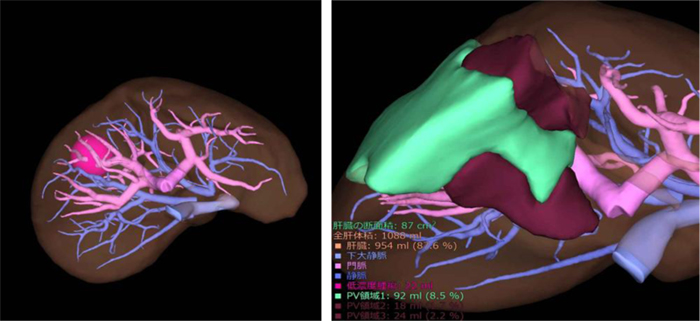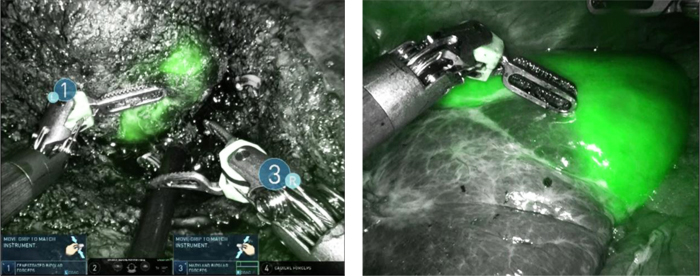
Liver Surgery
Specialty Topics
Robotic-assisted liver resection performed by skilled experts
Liver is the largest parenchymal organ surrounded by the diaphragm and is rich in blood, making it very prone to bleeding. So, large skin incision has been required to control bleeding during hepatic surgery. However, it led to affect postoperative wound pain, delayed postoperative recovery and rehabilitation, and widespread intraabdominal adhesions. In contrast, recent developments in surgical technology have made it possible to perform minimally invasive liver resections, including robotic surgery from the minimal skin incision. Is has been widely used in various gastrointestinal surgeries because of its promise of less postoperative pain and early recovery. Since liver resection surgery requires particularly advanced techniques, it is now being performed at a limited number of facilities, but it is not yet widely used. In our hospital, surgery is performed by skilled experts in hepatobiliary surgery and robot-assisted surgery. The da Vinci Surgical System used in robot-assisted surgery was developed to facilitate endoscopic surgery with 3D images, , articulated forceps, motion scale effects, and stabilization. These technologies are contributed to hepatic mobilization, parenchymal transection, dissection of the hepatic vessels, and is extremely useful for suturing operations for hemostasis. It resulted in enabling safe and accurate hepatic resection. At our department, we are actively performing minimally invasive robotic hepatectomy to take advantage of the characteristics of robotic surgery.

Preoperative 3D simulation
To perform robotic-assisted hepatectomy, it is essential to be skilled in minimally liver resection and robotic energy device Basically, to perform robotic hepatectomy, it is important to accurately evaluate preoperative liver function and preoperative simulation of tumor localization, relation with hepatic vessels, and the planned resection site. We always use the software of the preoperative simulation, Synapse Vincent software to create a 3D image of the liver, vasculature, and tumor location from the CT image and simulate the planned resection volume to determine the optimal resection area.

ICG fluorescence navigation surgery
In addition, to perform robot-assisted hepatectomy safely and securely, we have introduced the latest technology. We have introduced ICG fluorescence navigation surgery, in which surgery is performed by utilizing the characteristic of this ICG to emit fluorescence when irradiated with a specific excitation light. We always use ICG (indocyanine green), a drug used to measure liver function preoperatively. In recent years, fluorescent navigation surgery has become possible, taking advantage of the properties of ICG to accumulate in hepatic tumors and to block blood flow in the resection area, and by administering ICG intraoperatively, the area to be resected can be visualized. By utilizing the Firefly mode (fluorescence imaging system) installed in the latest da Vinci Surgical System, we perform more accurate, safer, and reliable liver resection, which leads to the benefit of patients.

